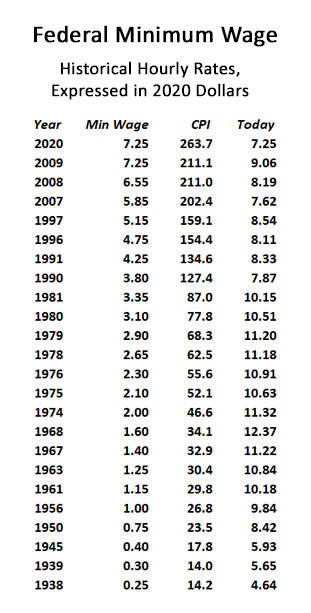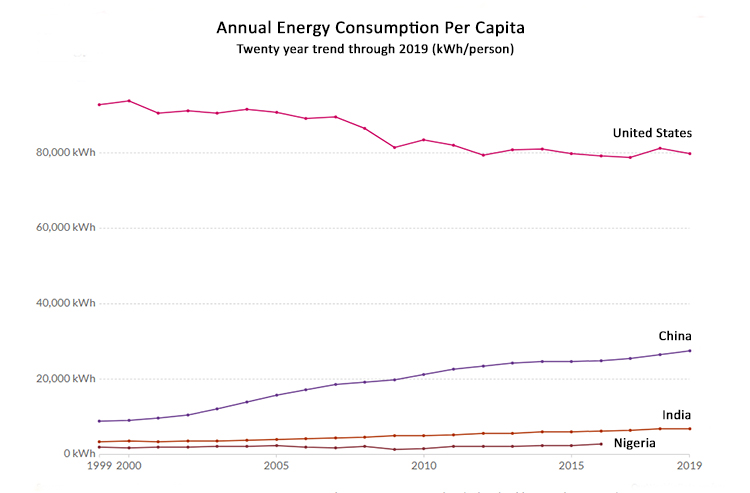An Agenda to Fix California
As a recall election looms and embattled Governor Newsom fights for his political life, the political ads, as usual, are expensive pablum. That’s what we’ve come to expect, of course, but this election is nonetheless more than a referendum on a failing governor and failing policies. It’s a chance to think about what California could be. Instead of candidates pledging to “lower taxes on the middle class,” which obviously isn’t a bad idea, contenders for governor might discuss very specific policies they would champion.
Moreover, as voters cast their ballots and decide whether or not to keep Newsom in office, they might think about which candidates they’ll support in the future. Do they want to continue supporting political mannequins? Talking puppets that spout focus group tested cliches when you pull a string in their back? Or candidates that may be a little rough around the edges, but possess the courage, the vision, and the attention to detail that California needs now more than ever?
Here, being as brief but as specific as possible, are some ideas to solve some of California’s biggest problems. Most of them are controversial. It would be nice to find a politician with the guts to espouse all of them, without equivocation and without exception.
Problem: Unreliable and expensive energy:
Solution: Upgrade California’s natural gas powerplants to run at maximum efficiency and without being shut on and off. End the restrictions on natural gas hookups in new construction. Keep Diablo Canyon nuclear power plant open. Streamline the permit process for additional natural gas and nuclear power plants. Allow additional extraction of California’s abundant reserves of natural gas and oil. Relax if not repeal the CO2 emissions targets pursuant to AB 32, the Global Warming Solutions Act of 2006. Continue to provide incentives for renewables, but recognize that an all-of-the-above energy strategy is an unavoidable necessity for developing nations with massive populations. Show the world how to do it in the most responsible manner possible. Restore abundant, affordable energy to Californians. Click here for more.
Problem: Scarce, expensive, rationed water:
Solution: Allocate a fixed percent of the state general fund to finance new investments in water infrastructure. Like energy, pursue an all-of-the-above strategy – runoff capture and storage, potable reuse of urban wastewater, off-stream reservoirs and expansion of existing reservoirs, percolation basins for aquifer recharge and recovery, and desalination. Invest enough to make the entire urban megapolis in Southern California independent of imported water. Streamline the punitive processes that make it take multiple decades to get projects approved. With all of this, again, set an example to the world of how to do it right. Restore abundant, affordable water to Californians. For more, go here, here, here, and here.
Problem: Congested, dilapidated, inadequate roads and freeways.
Solution: Recognize that smart roads are the future of transportation, not the past. Upgrade and widen all of California’s freeways. Recognize that automotive technology is in flux and repeal the zero emissions targets that prevent development of advanced hybrids. Develop protocols to designate smart lanes where next generation vehicles can convoy at high speeds. To make these investments cost-effective, reform the California Environmental Quality Act to reduce the time and expense of approving projects, and restructure CalTrans to outsource engineering and construction work to private contractors. For more, go here, here, here, here, and here.
Problem: Homes cost too much.
Solution: Increase the supply of homes by increasing density in the urban core, and building entire new cities along the 101 and I-5 freeway corridors and elsewhere. Quit pretending that California, a vast state that is only 5 percent urbanized, is running out of room for people. Leave existing suburbs alone and leave zoning decisions to local elected officials. Recognize that wood framed homes with reasonable outdoor space are what most families prefer, and that these homes are less expensive than metal and concrete multi-story structures. It takes two weeks to get a subdivision approved in Texas, but it takes twenty years to do it in California. End the war on suburbia and eliminate the outrageous costs and delays for building permits. For more, go here, and here.
Problem: There is a crisis of law and order and homelessness.
Solution: Restore the ability of police and courts to criminally prosecute and incarcerate citizens for selling hard drugs, public intoxication, and petty theft. For those homeless that haven’t committed crimes, construct centralized shelters in less expensive parts of cities and require job training and sobriety as a condition of entrance. California has wasted tens of billions constructing shelters and “supportive housing” at a cost that averages nearly $500,000 per unit. This is incredibly corrupt and utterly futile. Use that money to build safe barracks and pay counselors and vocational instructors. Reopen the fire camps for the able bodied criminal homeless and put them back on the fire lines. Take back our streets. For more, go here, and here.
Problem: Our forests are incinerating themselves and the air is unbreathable.
Solution: Bring back California’s timber industry, which as recently as the 1990s was harvesting 6.0 billion board feet per year from California’s forests. Today, barely 1.5 billion board feet come out. Why weren’t there massive fires every year back in 2000? Because logging was keeping up with regrowth as recently as ten years earlier. But now, for over thirty years, it has been nearly impossible to log, to thin, or do controlled burns, at the same time as our fire suppression industry has become incredibly effective. The result is overgrown forests of tinder dry, overcrowded and stressed trees. Of course they burn like hell. The solution is to let timber companies reopen mills and start logging responsibly again. They will clear the powerline corridors and maintain the fire roads and fire breaks, just like they used to, in exchange for logging rights. Prevent fires. Create jobs. Generate tax revenue. Supply affordable, in-state lumber for housing. Win, win, win, win. Click here for more.
Problem: Our schools are failing low income communities.
Solution: Stand up to the teachers’ unions, by creating competition in public instruction. This can be accomplished by making it easier to open charter schools, and taking away the cap on how many charter schools can operate. It can be accomplished by creating education savings accounts for every parent of a K-12 student, allowing those parents to use that money for the school of their choice – public, charter, private, parochial, or even homeschool. Theoretically, such a program could be revenue neutral or even save the state money. At the same time, reform the public schools by requiring a longer period before teachers can earn tenure, by favoring merit over seniority in layoffs, and by making it easier to fire incompetent teachers. Other ways to rescue K-12 education in California would be limit union negotiations to pay and benefits and outlaw teacher strikes, and to empower parents to opt-out of exposing their children to sexually explicit or politicized instruction. Click here for more.
The tragic reality in California today is that an entire complex – progressive billionaires, public sector unions, powerful environmentalist lobbyists and litigators, with nearly universal support from the legacy media, social media, and academia – considers most of these solutions, if not all of them, to be extreme. They’re not. They’re moderate, common sense solutions to serious problems that are obviously not being adequately handled based on what this complex considers to be the conventional wisdom.
Imagine California’s future if these policies became reality. The solutions suggested here for energy, housing, and forestry would actually generate tax revenue, along with hundreds of thousands of good jobs. The solutions suggested for education are revenue neutral. To supplement private investment, the economic boom these solutions would impart to the state overall would generate the tax revenue necessary for public investment in water and transportation infrastructure.
Imagine a state where instead of importing energy from Venezuela, or electricity from coal burning states, or lumber from British Columbia, or lithium from West African mines owned by the Chinese Communist Party, we would be producing all of these essential resources right here. Imagine the prosperity this would create. Californians consume these resources. That is reality. And even if we streamline what are currently crippling regulations, extraction operations located here in California will respect workers and the environment far more than they are being respected anywhere else in the world.
On a foundation of new and broad based prosperity, California can then afford to leapfrog other states and nations. California can innovate with transportation tunnels under its cities. California can innovate with passenger drones occupying aerial lanes above its cities. California can fund research into fusion energy and satellite solar power stations. California can solidify its position as one of the wealthiest and most innovative places on earth, but at the same time a place where ordinary families have a chance again.
California can be a place where there is abundance instead of scarcity, pragmatism instead of ideology, and optimism instead of pessimism. These values used to define California. They can do so again. California’s future can be very bright indeed.
This is the conversation California’s candidates for governor should be having.
This article originally appeared on the website of the California Globe.
* * *

Edward Ring is a contributing editor and senior fellow with the California Policy Center, which he co-founded in 2013 and served as its first president. He is also a senior fellow with the Center for American Greatness, and a regular contributor to the California Globe. His work has appeared in the Los Angeles Times, the Wall Street Journal, the Economist, Forbes, and other media outlets.
To help support more content and policy analysis like this, please click here.



